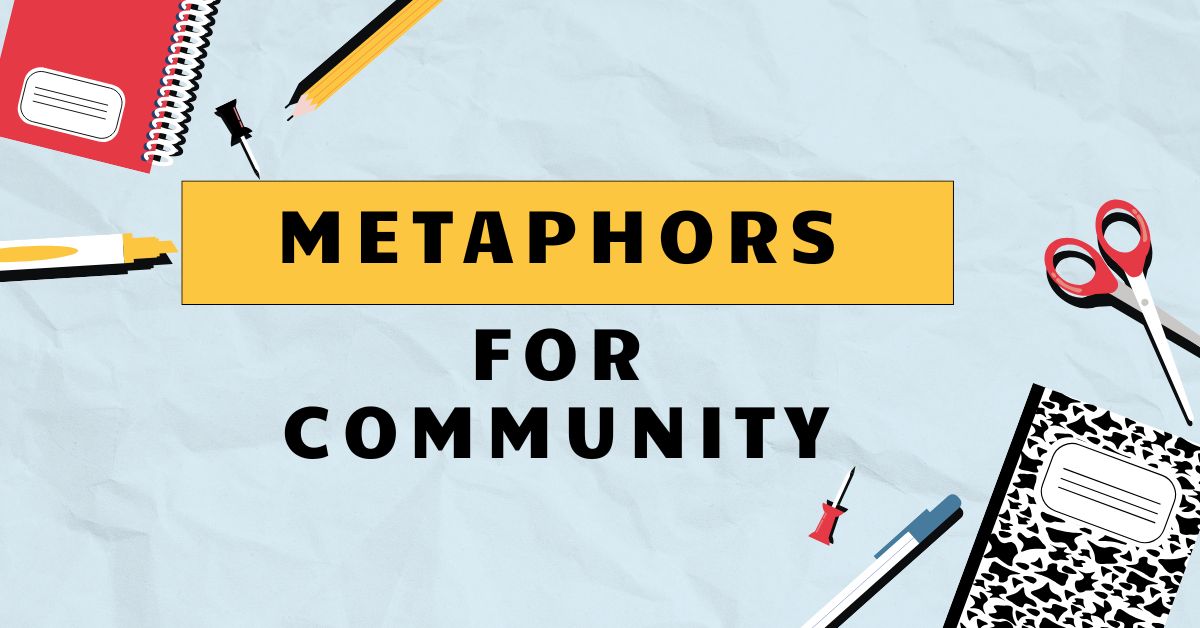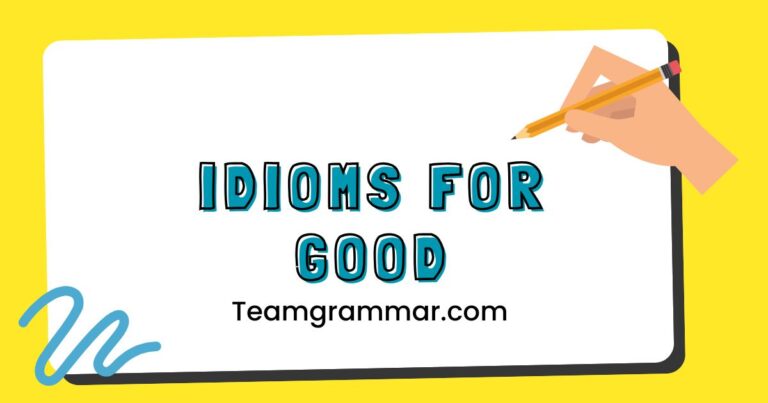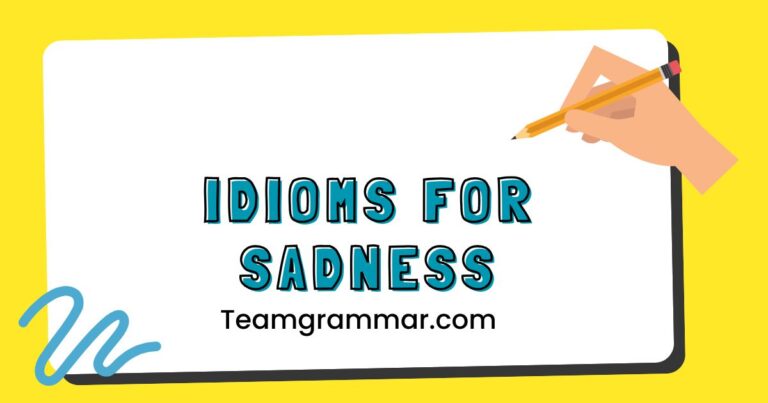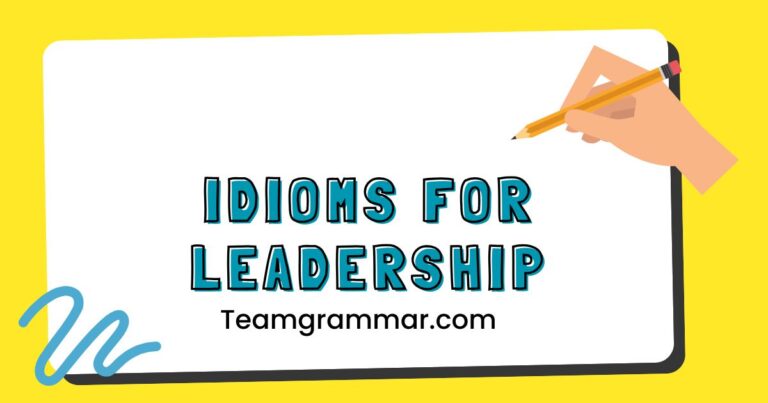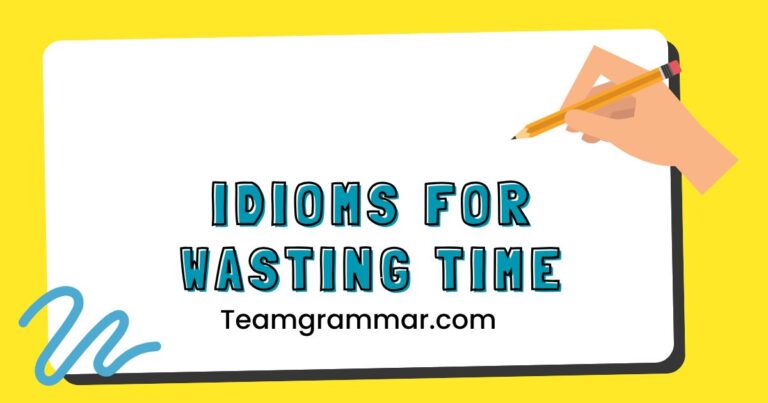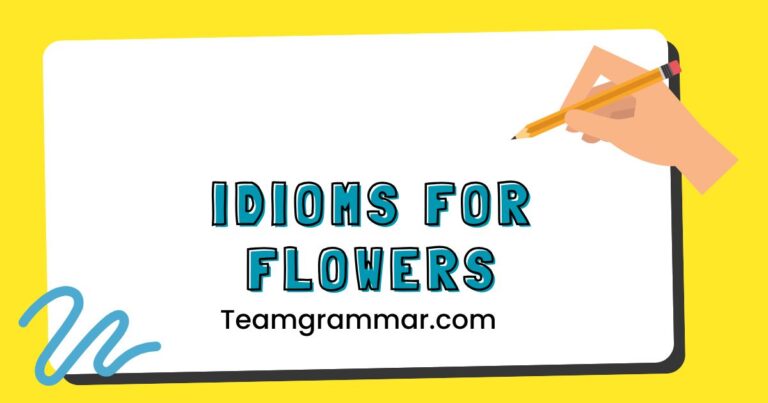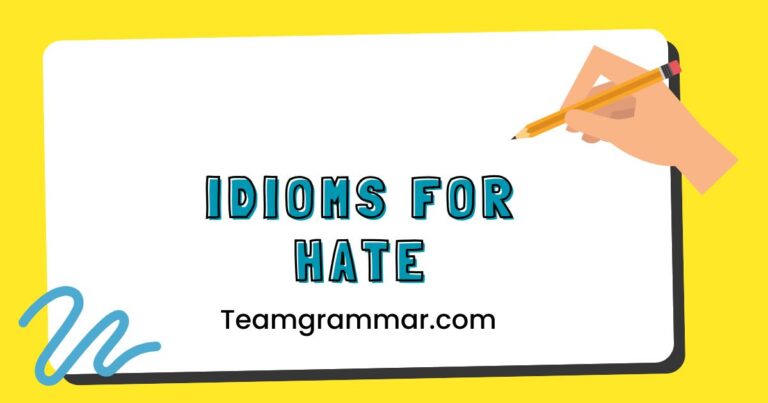49 Community Metaphors: Understanding Figurative Language
Metaphors are powerful tools that allow us to understand abstract concepts by relating them to more concrete ideas. When we talk about community, metaphors help us grasp its complex dynamics, shared values, and interconnected relationships.
Understanding metaphors for community enhances our ability to communicate effectively, fostering deeper connections and shared understanding. This article explores the diverse ways metaphors shape our perception of community, providing insights and examples beneficial for students, writers, and anyone interested in language and social dynamics.
Table of Contents
- Introduction
- Definition of Metaphor and Community
- Structural Breakdown of Community Metaphors
- Types of Metaphors for Community
- Examples of Community Metaphors
- Usage Rules for Community Metaphors
- Common Mistakes in Using Community Metaphors
- Practice Exercises
- Advanced Topics: Extended Metaphors and Symbolism
- FAQ: Frequently Asked Questions
- Conclusion
Definition of Metaphor and Community
Ametaphoris a figure of speech that directly compares two unrelated things without using “like” or “as.” It asserts that one thingisanother, creating a connection that illuminates certain qualities or characteristics. Metaphors are used to make abstract concepts more understandable and relatable.
In the context of language, metaphors enrich expression, making it more vivid and engaging.
Community, in its broadest sense, refers to a group of people living in the same place or having a particular characteristic in common. This shared element can be geographic location, common interests, shared values, or even a sense of belonging.
Understanding community involves recognizing the complex interactions and relationships that bind individuals together.
Structural Breakdown of Community Metaphors
Community metaphors typically consist of two main elements: thetenorand thevehicle. The tenor is the subject being described (in this case, the community), while the vehicle is the object or concept used to explain the tenor.
The effectiveness of a metaphor lies in the shared qualities or characteristics between the tenor and the vehicle.
For instance, in the metaphor “the community is a well-oiled machine,” the community is the tenor, and the well-oiled machine is the vehicle. The shared characteristic is the idea of smooth, efficient operation.
This metaphor suggests that a healthy community functions seamlessly with all its components working in harmony.
The structure can also involve implied meanings, where the comparison isn’t explicitly stated but is understood through context. The goal is always to convey a deeper understanding of the community’s nature by drawing parallels with something familiar.
Types of Metaphors for Community
There are several common types of metaphors used to describe communities, each emphasizing different aspects of their structure and function. These metaphors provide unique perspectives on how communities operate and the relationships within them.
Community as Organism
This metaphor views the community as a living entity, with different parts working together to maintain its overall health and well-being. Each member or group within the community represents an organ or system crucial to the organism’s survival.
A healthy community is one where all parts function harmoniously.
Community as Machine
The “community as machine” metaphor emphasizes efficiency, order, and functionality. Each member is seen as a cog in the machine, contributing to the overall operation.
This metaphor highlights interdependence and the importance of each part fulfilling its role for the machine to function correctly. This can also highlight the dangers of dehumanization and lack of individuality.
Community as Fabric
This metaphor emphasizes the interconnectedness and interwoven nature of relationships within the community. Each thread represents an individual, and the fabric represents the collective strength and resilience of the community.
The texture, color, and pattern of the fabric reflect the community’s unique character and diversity.
Community as Building
Viewing a community as a building highlights its structure, foundation, and the process of construction. The foundation represents the shared values and principles upon which the community is built.
Each brick or component signifies individual contributions, and the overall structure represents the community’s stability and permanence. Renovation and upkeep represent ongoing efforts to improve and maintain the community.
Community as Family
This metaphor emphasizes the emotional bonds, support, and sense of belonging within a community. Members are seen as interconnected, with shared responsibilities and mutual care.
This metaphor highlights the importance of relationships, traditions, and collective identity. However, it can also bring to light issues of dysfunction and conflict, mirroring family dynamics.
Community as Garden
The “community as garden” metaphor highlights growth, nurturing, and diversity. Each member is like a plant, contributing to the overall beauty and health of the garden.
This metaphor emphasizes the importance of care, cultivation, and creating a supportive environment for individuals to flourish. Weeds might represent negative influences or challenges that need to be addressed.
Community as Team
This metaphor emphasizes collaboration, shared goals, and interdependence. Each member has a specific role, and success depends on everyone working together effectively.
The team metaphor highlights the importance of communication, coordination, and mutual support.
Community as Ecosystem
This metaphor views the community as a complex network of interdependent organisms, each playing a vital role in maintaining balance and sustainability. It emphasizes the importance of diversity, resource management, and environmental responsibility.
Changes in one part of the ecosystem can have cascading effects on the entire community.
Examples of Community Metaphors
The following tables provide examples of community metaphors, categorized by the type of metaphor they represent. Each example illustrates how the metaphor is used and what aspects of the community it highlights.
This table illustrates the “Community as Organism” metaphor, showcasing how different aspects of the community can be likened to parts of a living being. Each example highlights the interdependence and vital functions within the community.
| Metaphor | Explanation |
|---|---|
| The community’s heart is its volunteer network. | Volunteers are essential for the community’s well-being, just as the heart is vital for the body. |
| Education is the backbone of the community. | Education provides structure and support, similar to the spine. |
| Businesses are the lifeblood of the community. | Businesses provide economic vitality, similar to blood circulating through the body. |
| The arts are the soul of the community. | The arts provide cultural enrichment and emotional depth. |
| Infrastructure is the skeleton holding the community together. | Roads, bridges, and utilities provide the framework for daily life. |
| Local government is the brain of the community, making decisions and coordinating activities. | Government provides leadership and organization. |
| The youth are the future cells, constantly growing and renewing the community. | Young people represent the potential for growth and change. |
| Elderly residents are the memory of the community, preserving its history and traditions. | Seniors provide wisdom and continuity. |
| Social services are the immune system, protecting vulnerable members. | Social services provide support and protection. |
| Parks and green spaces are the lungs of the community, providing fresh air and recreation. | Parks enhance the quality of life and environmental health. |
| Community events are the pulse, showing the vitality and engagement of its members. | Events demonstrate active participation and connection. |
| Local media is the sensory system, keeping the community informed and aware. | Media provides information and awareness. |
| The town square is the central nervous system, connecting all parts of the community. | The town square serves as a hub for interaction and communication. |
| Community leaders are the muscles, driving change and progress. | Leaders provide strength and direction. |
| The library is the knowledge center, storing and sharing information. | Libraries offer resources for learning and growth. |
| The police force is the protective layer, ensuring safety and security. | Police provide security and order. |
| The schools are the digestive system, processing and nurturing young minds. | Schools educate and prepare future generations. |
| The churches are the spirit, providing moral guidance and unity. | Churches offer spiritual and ethical support. |
| The farmers are the feeders, nourishing the community with sustenance. | Farmers provide essential resources for survival. |
| The artists are the beautifiers, adding aesthetic value and inspiration. | Artists enhance the environment and culture. |
| The entrepreneurs are the innovators, constantly generating new ideas and opportunities. | Entrepreneurs drive economic growth and creativity. |
| The activists are the agitators, pushing for necessary change and reform. | Activists advocate for progress and justice. |
| The healers are the doctors, mending wounds and promoting wellness. | Healthcare professionals provide medical care and support. |
| The storytellers are the historians, preserving the community’s narrative and identity. | Storytellers maintain cultural heritage and memory. |
This table presents examples of the “Community as Machine” metaphor, highlighting the functional and interdependent aspects of community operations. Each example illustrates how different parts of the community contribute to its overall efficiency and success.
| Metaphor | Explanation |
|---|---|
| The community is a well-oiled machine. | Every part works smoothly and efficiently. |
| The city council is the engine of progress. | The council drives policy and development. |
| Volunteers are the gears that keep the community running. | Volunteers provide essential support and effort. |
| Local businesses are the fuel that powers the economy. | Businesses provide economic energy and resources. |
| The school system is the assembly line of future leaders. | Schools prepare students for future roles. |
| Infrastructure is the framework that supports the community’s operations. | Roads, utilities, and systems provide essential support. |
| The community’s budget is the blueprint for its development. | The budget guides resource allocation and planning. |
| The town hall is the control panel of the community. | The town hall manages and coordinates community activities. |
| The police department is the security system, ensuring safety and order. | Police provide protection and maintain law. |
| The library is the data center, storing and sharing knowledge. | Libraries offer information and resources. |
| Social services are the safety net, catching those who might fall. | Social services provide support for vulnerable members. |
| The local newspaper is the communication network, keeping everyone informed. | Newspapers disseminate news and information. |
| Festivals are the spark plugs, igniting community spirit. | Festivals generate enthusiasm and engagement. |
| The planning committee is the architect, designing the community’s future. | The committee plans and develops community strategies. |
| The waste management system is the cleaning crew, keeping the community tidy. | Waste management maintains cleanliness and hygiene. |
| The transportation system is the delivery service, connecting people and places. | Transportation facilitates movement and access. |
| The healthcare system is the repair shop, fixing what’s broken and maintaining health. | Healthcare provides medical care and support. |
| The judicial system is the regulator, ensuring fairness and compliance. | The judicial system enforces laws and resolves disputes. |
| The emergency services are the rapid response team, addressing crises and emergencies. | Emergency services provide immediate assistance. |
| The public utilities are the power grid, providing essential services. | Utilities supply water, electricity, and other necessities. |
| The economic development agency is the investment firm, fostering growth and opportunity. | The agency promotes economic expansion and job creation. |
| The community center is the hub, connecting people and resources. | The community center provides a central meeting place and services. |
| The public parks are the recreation centers, offering space for leisure and activity. | Parks provide areas for relaxation and exercise. |
| The local market is the distribution center, providing goods and services. | Markets facilitate commerce and trade. |
This table provides examples of the “Community as Fabric” metaphor, illustrating how the interconnected relationships and diverse elements within a community create a unified whole. Each example highlights the strength and resilience of the community fabric.
| Metaphor | Explanation |
|---|---|
| The community is a tightly woven fabric. | Strong connections bind members together. |
| Each resident is a thread in the community’s tapestry. | Individuals contribute to the overall picture. |
| Diversity is the rich texture of the community’s fabric. | Variety adds depth and interest. |
| Shared values are the strong fibers that hold the community together. | Common beliefs create unity and cohesion. |
| Traditions are the patterns woven into the community’s fabric. | Customs and practices add cultural richness. |
| Challenges are the snags in the fabric that need mending. | Problems require attention and repair. |
| Community projects are the seams that strengthen the fabric. | Collaborative efforts reinforce connections. |
| The arts are the vibrant colors that brighten the community’s fabric. | Creative expression adds beauty and inspiration. |
| Education is the thread of knowledge that runs through the community’s fabric. | Learning and information enhance understanding. |
| Businesses are the golden threads that add value to the community’s fabric. | Commerce and industry contribute economic strength. |
| Volunteers are the reinforcing stitches that make the community’s fabric stronger. | Voluntary efforts add support and resilience. |
| Community leaders are the weavers who guide the design of the fabric. | Leaders shape the direction and development. |
| The history of the community is the antique pattern, telling a story of its past. | Past events and experiences shape identity. |
| The youth are the new threads, bringing fresh ideas and energy. | Young people represent future growth and innovation. |
| The elderly are the time-tested threads, sharing wisdom and experience. | Seniors offer valuable insights and guidance. |
| The social services are the repair kit, mending tears and providing support. | Support systems help those in need. |
| The community events are the knots that bind the fabric together. | Events foster connection and unity. |
| The local heroes are the shining threads, inspiring hope and admiration. | Role models inspire positive change. |
| The public spaces are the open weaves, allowing room for growth and connection. | Parks and plazas provide gathering spaces. |
| The collective efforts are the intricate patterns, creating a unique design. | Collaborative work produces distinctive results. |
| The challenges and triumphs are the contrasting colors, adding depth and complexity. | Experiences shape the community’s character. |
| The spirit of the community is the texture, giving it a unique feel and character. | The community’s essence defines its identity. |
| The common goals are the underlying structure, providing stability and support. | Shared objectives create cohesion. |
This table provides examples of the “Community as Family” metaphor, illustrating the emotional bonds, shared responsibilities, and mutual care that characterize a community. Each example highlights the familial aspects of community relationships.
| Metaphor | Explanation |
|---|---|
| The community is our extended family. | Members share close relationships and support. |
| Neighbors are like brothers and sisters in this community. | Close bonds and mutual support exist. |
| The elders are the grandparents, offering wisdom and guidance. | Seniors provide experience and advice. |
| The children are the future, carrying on the community’s legacy. | Young people represent the community’s future. |
| Community leaders are the parents, guiding and nurturing the community. | Leaders provide direction and care. |
| The community gatherings are family reunions, celebrating togetherness. | Events foster connection and unity. |
| Helping each other is the family way in our community. | Mutual support is a core value. |
| The community is a close-knit family, always there for each other. | Strong bonds and mutual support exist. |
| The community is a supportive family, helping each other through tough times. | Members provide assistance during hardship. |
| The community is a loving family, caring for each other’s well-being. | Members prioritize each other’s welfare. |
| The community is a growing family, welcoming new members with open arms. | Newcomers are embraced and included. |
| The community is a diverse family, celebrating each other’s unique qualities. | Variety and individuality are valued. |
| The community is a resilient family, overcoming challenges together. | Obstacles are faced collectively. |
| The community is a harmonious family, resolving conflicts with understanding. | Disputes are handled with empathy. |
| The community is a nurturing family, fostering growth and development. | Members support each other’s progress. |
| The community is a proud family, celebrating each other’s accomplishments. | Achievements are recognized and honored. |
| The community is a united family, standing together for common goals. | Shared objectives create solidarity. |
| The community is a generous family, sharing resources and kindness. | Charity and compassion are practiced. |
| The community is a respectful family, valuing each other’s opinions and beliefs. | Differences are acknowledged and appreciated. |
| The community is a grateful family, appreciating each other’s contributions. | Efforts are recognized and valued. |
Usage Rules for Community Metaphors
When using metaphors for community, it’s important to follow certain rules to ensure clarity and effectiveness.First, the metaphor should be relevant and appropriate to the context. Avoid using metaphors that are too abstract or unrelated to the community’s characteristics.Second, be consistent in your use of the metaphor.
Mixing metaphors can create confusion and weaken the overall message.Third, consider the audience. Choose metaphors that resonate with their experiences and understanding.Fourth, be mindful of the connotations of the metaphor.
Ensure that the vehicle doesn’t carry unintended negative associations.
Also, avoid overusing metaphors. While they can be powerful, too many metaphors can clutter your writing and detract from your message.
Use them strategically to highlight specific points or create a vivid image.
Common Mistakes in Using Community Metaphors
One common mistake is usingmixed metaphors, which combine unrelated images and create confusion. For example, saying “The community is a well-oiled machine sailing through rough waters” mixes the machine and nautical metaphors, resulting in a nonsensical image.
It’s better to stick to one consistent metaphor throughout your discussion.
Another mistake is usingclichéd metaphorsthat have lost their impact through overuse. Phrases like “the heart of the community” or “the backbone of society” are common but lack originality.
Try to find fresh and creative ways to express your ideas.
Additionally, be careful to avoid inappropriate metaphors that might offend or alienate your audience. For instance, comparing a community to a battlefield could evoke negative associations and undermine your message of unity and cooperation.
| Incorrect | Correct |
|---|---|
| The community is a melting pot sailing through space. | The community is a vibrant mosaic. |
| Volunteers are the backbone and the fuel of the community. | Volunteers are the backbone of the community. |
| The community is a battlefield of ideas flowering in the sun. | The community is a garden of ideas. |
Practice Exercises
Test your understanding of community metaphors with these exercises. Identify the type of metaphor used in each sentence and explain its meaning.
| Question | Answer |
|---|---|
| 1. The community is a vibrant tapestry woven with diverse cultures. | Type: Community as Fabric. Meaning: The community is made up of different cultures that are interconnected and create a beautiful whole. |
| 2. The city council is the engine driving progress in our town. | Type: Community as Machine. Meaning: The city council is the driving force behind the community’s development and advancement. |
| 3. The youth are the seeds of the future, planted in the fertile ground of our community. | Type: Community as Garden. Meaning: Young people represent the potential for growth and development within the community. |
| 4. The community is a family, supporting each other through thick and thin. | Type: Community as Family. Meaning: The community members are closely connected and provide mutual support. |
| 5. The local hospital is the heart of our community, providing care for all. | Type: Community as Organism. Meaning: The hospital is vital for the health and well-being of the community. |
| 6. The community is an ecosystem, where each member plays a vital role. | Type: Community as Ecosystem. Meaning: The community is a complex network of interdependent individuals. |
| 7. The volunteers are the gears that keep our community running smoothly. | Type: Community as Machine. Meaning: Volunteers provide essential support to community functions. |
| 8. The community is a building, with strong foundations of shared values. | Type: Community as Building. Meaning: The community is built on a solid base of common principles. |
| 9. The police force is the shield, protecting the community from harm. | Type: Community as Organism. Meaning: The police provide security and safety. |
| 10. The community is a team, working together towards common goals. | Type: Community as Team. Meaning: Collaboration and shared objectives are essential. |
Exercise 2: Rewrite the following sentences using a different type of community metaphor.
| Question | Answer |
|---|---|
| 1. The community is a well-oiled machine. (Rewrite as a garden) | The community is a thriving garden, where each member contributes to its growth. |
| 2. The community is a close-knit family. (Rewrite as a building) | The community is a sturdy building, founded on strong relationships and mutual support. |
| 3. The community is a vibrant tapestry. (Rewrite as an organism) | The community is a living organism, with each member playing a vital role in its health and vitality. |
| 4. The community is a garden, full of diverse flowers. (Rewrite as a machine) | The community is a complex machine, with each member as a specialized component. |
| 5. The community is a team, striving for victory. (Rewrite as a fabric) | The community is a tightly woven fabric, with each member contributing to its strength and resilience. |
| 6. The community is a building with a solid foundation. (Rewrite as a family) | The community is a loving family, built on strong bonds and mutual care. |
| 7. The community is an ecosystem with balanced interactions. (Rewrite as a machine) | The community is a machine, where each part is interconnected and contributes to its efficient operation. |
| 8. The community is a heart pumping life into the city. (Rewrite as fabric) | The community is a thread in the city’s fabric, essential to the city’s overall texture. |
| 9. The community is a team working towards a common goal. (Rewrite as family) | The community is a family, supporting each other as they pursue their shared dreams. |
| 10. The community is a garden that needs constant tending. (Rewrite as a machine) | The community is a machine that requires regular maintenance to function efficiently. |
Advanced Topics: Extended Metaphors and Symbolism
For advanced learners, exploringextended metaphorsandsymbolismcan deepen your understanding of community metaphors. An extended metaphor is a metaphor that is developed over several lines or paragraphs, allowing for a more detailed and nuanced comparison.
This technique can be used to create a richer and more complex image of the community.
Symbolisminvolves using objects, people, or ideas to represent something else. In community metaphors, symbols can add layers of meaning and evoke deeper emotions.
For example, a bridge might symbolize connection and unity, while a wall could represent division and isolation. Understanding the symbolic meaning of various elements can enhance your ability to interpret and create powerful community metaphors.
Consider the extended metaphor of a community as a ship. The captain represents the leader, the crew represents the members, and the ship itself represents the community’s shared goals and values.
The journey across the sea symbolizes the challenges and triumphs that the community faces together. This extended metaphor allows for a more comprehensive exploration of the community’s dynamics and aspirations.
FAQ: Frequently Asked Questions
- What is the difference between a metaphor and a simile?
A metaphor directly states that one thing is another, while a simile uses “like” or “as” to make a comparison. For example, “The community is a family” is a metaphor, whereas “The community is like a family” is a simile. Metaphors are generally considered more powerful and direct.
- Why are metaphors useful in describing communities?
Metaphors help us understand abstract concepts by relating them to more concrete and familiar ideas. They can make complex dynamics and relationships within a community more accessible and relatable, fostering deeper understanding and connection.
- How can I avoid using clichéd community metaphors?
To avoid clichés, try to think beyond the obvious and find fresh, original ways to express your ideas. Consider the specific characteristics of the community you’re describing and look for metaphors that capture its unique qualities. Brainstorm different images, ideas, and associations to find a metaphor that resonates with your audience.
- Can metaphors be used in a negative way to describe communities?
Yes, metaphors can be used negatively to highlight problems or shortcomings within a community. For example, describing a community as a “toxic environment” or a “breeding ground for corruption” can be a powerful way to express criticism and call for change. However, it’s important to use such metaphors carefully and responsibly, avoiding language that is overly inflammatory or offensive.
- How do cultural differences affect the interpretation of community metaphors?
Cultural differences can significantly impact the interpretation of metaphors. Certain images, symbols, or ideas may have different meanings or connotations in different cultures. It’s important to be aware of these differences and choose metaphors that are culturally sensitive and appropriate for your audience. Consider the values, beliefs, and experiences that shape people’s understanding of the world.
- What are the key elements of an effective community metaphor?
An effective community metaphor should be relevant, clear, consistent, and resonant. It should accurately reflect the characteristics of the community, be easy to understand, maintain a consistent image, and evoke the desired emotions or associations. It should also be original and avoid clichés.
- How can I use extended metaphors to describe a community in more detail?
To develop an extended metaphor, start with a central image or idea and then expand upon it with related details and associations. For example, if you’re using the metaphor of a community as a garden, you could describe the different types of plants, the role of the gardener, the challenges of weather and pests, and the rewards of a bountiful harvest. This allows you to create a more comprehensive and nuanced picture of the community.
- Why is it important to choose appropriate metaphors when discussing community issues?
Choosing appropriate metaphors is crucial because they shape how people perceive and understand complex community issues. A well-chosen metaphor can clarify the issue, highlight important aspects, and foster empathy. Conversely, an inappropriate metaphor can mislead, confuse, or even offend the audience. Therefore, it’s essential to carefully consider the connotations and implications of the metaphors you use.
Conclusion
Understanding metaphors for community provides valuable insights into how we perceive and communicate about social structures. By recognizing the underlying comparisons in these metaphors, we can better grasp the dynamics, values, and relationships within communities.
This knowledge enhances our ability to express ourselves effectively and foster deeper connections with others. Whether you are a student, writer, or simply interested in language, mastering community metaphors will undoubtedly enrich your understanding of both language and society.
Remember to use metaphors thoughtfully and creatively, considering the context, audience, and potential implications of your choices. Experiment with different types of metaphors to find the ones that best capture the essence of the community you are describing.
By doing so, you can unlock the power of figurative language to illuminate the complexities of community life and inspire positive change.

